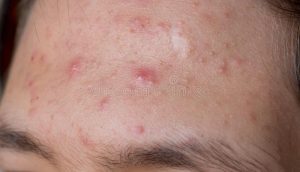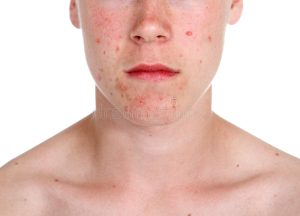If you have been struggling with fungal acne for some time now, we have some good news for you! New research suggests that this type of acne may soon be a thing of the past. Face acne is caused by a type of fungus called malassezia, which is commonly found on the skin. This fungus is harmless in most cases, but it can cause problems for people who are susceptible to it. The good news is that there are now several treatments available that can effectively kill the fungus and allow your skin to heal. In this blog post, we will explore some of these new treatments and how they can help you get rid of your fungal acne for good.
What is fungal acne?
If you thought acne was just a teenage phase, you were wrong. Acne can affect people of all ages and skin types – even those who don’t have oily skin. In fact, face acne is becoming an increasingly common skin condition, especially among adults.
Face acne is caused by a type of fungus called malassezia, which is naturally present on the skin. When this fungus overgrows, it can cause inflammation and the formation of pimples. Face acne often looks like regular acne, but it can be distinguished by its location (typically on the face, chest, or back) and its tendency to resist traditional acne treatments.
If you think you might have skin acne, it’s important to see a dermatologist for proper diagnosis and treatment. Treatments for skin acne typically include antifungal medications, both topical and oral. With proper treatment, face acne usually clears up within several weeks.
The different types of fungal acne
Fungal acne is a type of acne that is caused by a fungus. There are many types of fungi that can cause this condition, and they can be divided into two main categories: dermatophytes and yeasts.
Dermatophytes are the most common type of fungi that cause face acne. These fungi live on the dead cells of the skin and hair, and they are the same ones that cause athlete’s foot and jock itch. The most common dermatophyte that causes face acne is Trichophyton mentagrophytes, which is also known as ringworm.
Yeasts are another type of fungus that can cause face acne. Unlike dermatophytes, yeasts do not need dead skin cells to survive; they can live on the healthy cells of the skin as well. The most common yeast that causes face acne is Candida albicans. Other less common yeasts include Malassezia fur, Rhodotorula rubra, and Saccharomyces cerevisiae.

The causes of fungal acne
Fungal acne is most commonly caused by overgrowth of the yeast Malassezia. This yeast is found on the skin of everyone, but it can overgrow in people with weakened immune systems, or who are taking certain medications that suppress immunity. Other potential:
causes include:
• Overuse of antibiotics: Antibiotics kill both good and bad bacteria, which can allow fungi to overgrow.
• Poor hygiene: Not washing your face regularly, or using dirty makeup brushes, can allow fungus to grow on your skin.
• Hormonal changes: Fluctuations in hormones can cause an increase in oil production, which can lead to fungal overgrowth.
How to treat fungal acne
If you’re reading this, then you probably already know what fungal acne is. But in case you need a refresher, fungal acne is a form of acne that’s caused by a yeast infection. It usually shows up as red bumps or blisters on the skin, and it can be really itchy and uncomfortable.
The good news is that there are treatments available for fungal acne. The first step is to see a dermatologist or other healthcare provider to get a diagnosis. Once you know that you have fungal acne, you can start treating it with an antifungal cream or ointment. You can find these at most pharmacies or drugstores.
Apply the cream or ointment to the affected areas of your skin, and be sure to follow the directions on the packaging. Most treatments need to be used for at least two weeks before they start working. In some cases, you may need to use them for longer.
Remember, patience is key when it comes to treating any kind of acne. So don’t give up if your treatment doesn’t work right away. Keep using it as directed, and eventually your fungal acne will clear up!
Fungal acne prevention tips
There are a few things you can do to help prevent fungal acne from happening in the first place. Here are some tips:
— Wash your face twice a day with a gentle, non-irritating cleanser.
— Be sure to remove all makeup before cleansing your face at night.
— Avoid using harsh, drying soaps or cleansers on your face.
— Use an antifungal shampoo and body wash regularly if you are prone to body acne.
— Keep your hair clean and off of your face as much as possible.
— Change your pillowcase often, and launder it in hot water if possible.
Conclusion
If you’ve been dealing with fungal acne for a while, congratulations! You’re about to see your skin transform for the better. Thanks to advances in skincare technology, there are now more options than ever before for treating fungal acne. So don’t wait any longer – find the right product for you and start seeing results. Your days of struggling with fungal acne are numbered!








